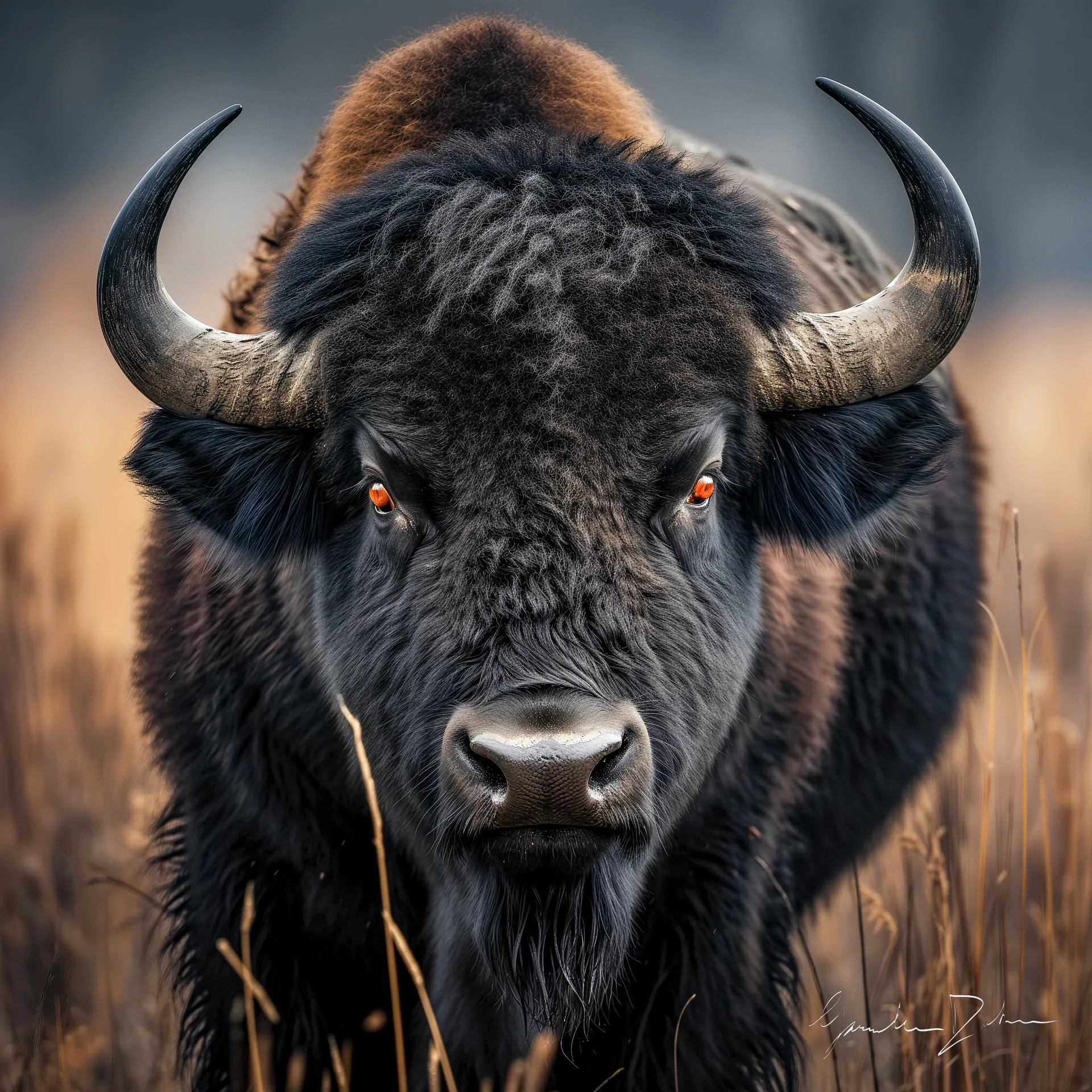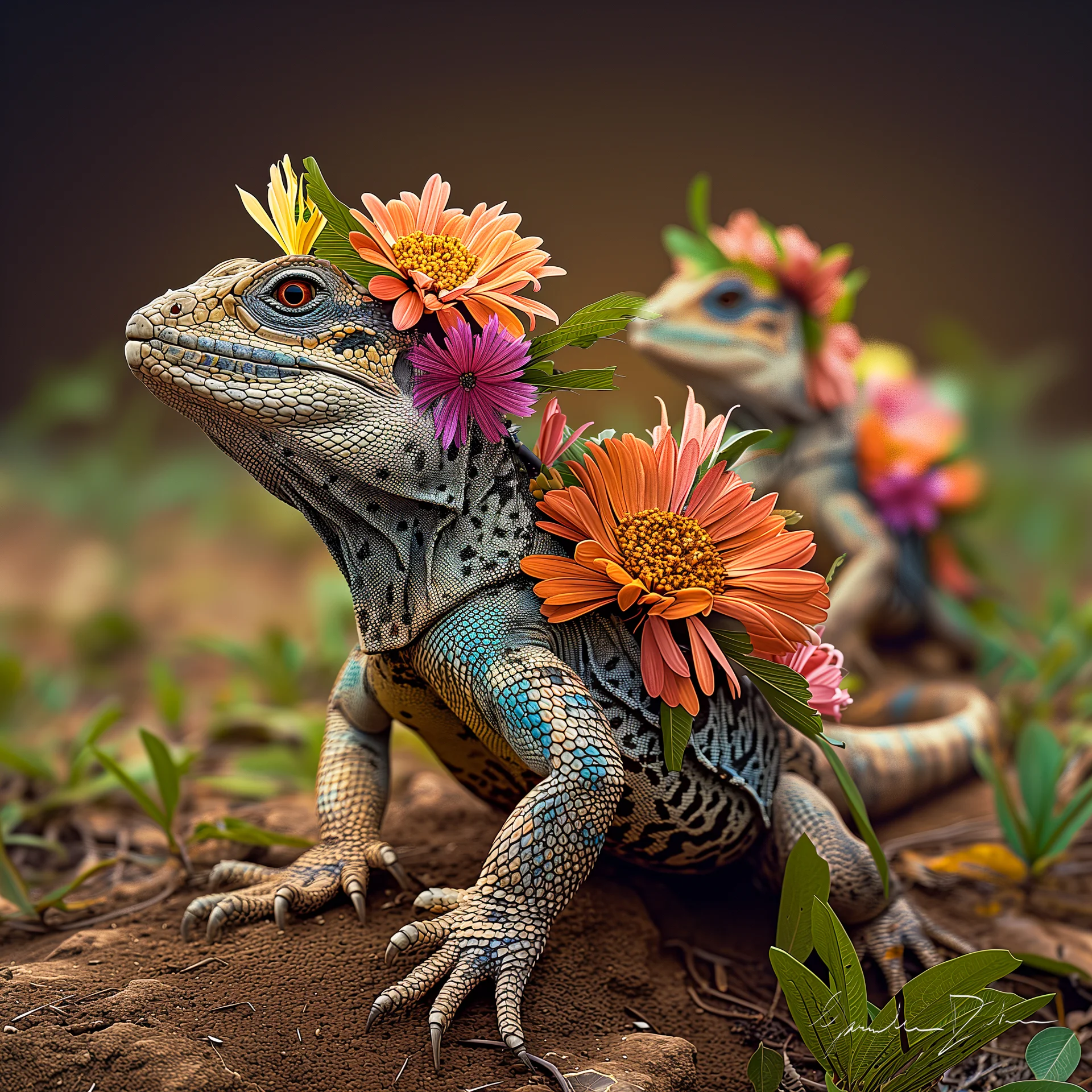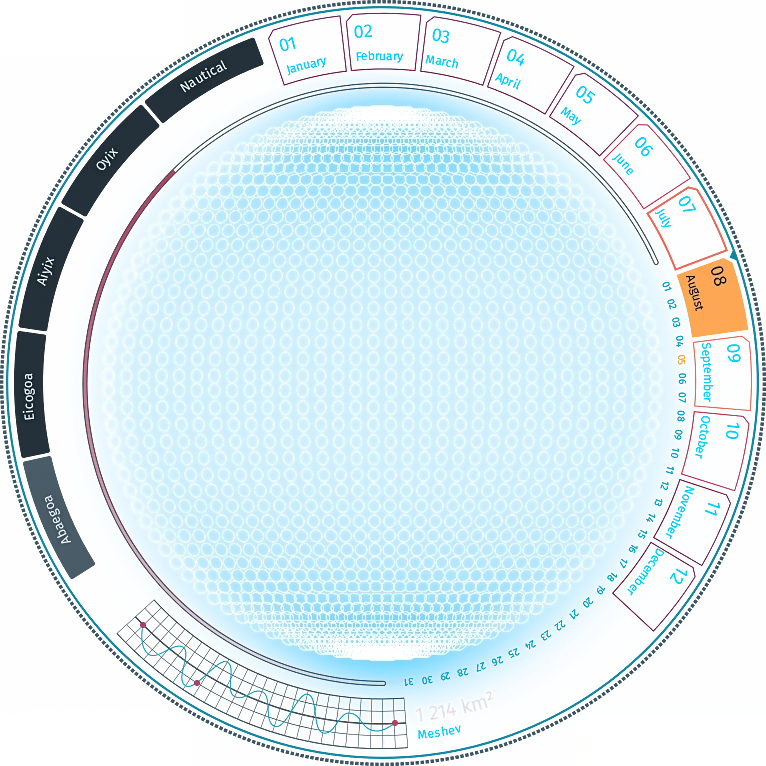Meshev (mɛʃɛv)
Geography
Meshev lies at the heart of a vast continent, centered on the sweeping grasslands of the Omari Grassland. The landscape consists of rolling hills and flat, open prairie, dotted by occasional stands of broadleaf trees. To the north, the plains extend to the shoreline of a vast ocean. Mighty rivers flow northwards from the highlands of the south, including the mighty Seldon River that bisects the continent.
The Seldon River cuts through the plains, providing life-giving water as it flows northwards. Lush riparian zones flank the river banks, with willows, cottonwoods and other deciduous trees taking advantage of the permanent water source. Where tributaries join the Seldon, wide wetlands have formed, creating habitat for diverse waterfowl and wildlife. The Seldon ultimately empties into the northern ocean.
To the east, the grasslands run up against the imposing Aecax Mountains. These steep, rugged peaks mark the border with Sevangesia, and also wring moisture from the air to water Meshev. To the west is the blasted wasteland of Thar'kenes, unfortunately polluted and damaged by Meshev's industry. The south is bounded by a highland region where the Seldon River originates.
Though human development has impacted the landscape, the natural beauty of the sweeping grasses and wildflowers waving in the wind remains. The plains are crisscrossed by herds of grazing animals from bison to antelope. From high vantage points, the sea of grass seems to stretch endlessly to the horizon.
Ecosystem
The Omari Grassland are dominated by grasses adapted to the continental climate. Big bluestem, switchgrass, and Indian grass grow in tall stands, towering over other plants. Shorter grasses like grama grass and buffalo grass form turf in the drier areas. Wildflowers bloom among the grasses in colorful carpets during the spring and take advantage of the plentiful summer rains.
The mammal community is well-adapted to this open habitat. Large herds of bison thunder across the landscape, grazing on the nutritious grasses. Pronghorn antelope sprint across the plains, ever watchful for the open country's predators. Smaller mammals like prairie dogs and jackrabbits stay alert for danger while feeding. Badgers, coyotes, wolves and bobcats hunt these smaller residents. At night, the calls of nighthawks and coyotes pierce the air.
Grassland birds fill diverse niches, from predatory hawks and eagles soaring overhead to smaller songbirds like meadowlarks and grasshopper sparrows hidden in the grasses. Along the rivers, kingfishers dive for fish while herons stalk the shallows. Waterfowl flock to the marshes and wetlands. Overall, a complex web of life thrives on the productive grassland ecosystem.
The continental climate brings dramatic seasonal changes to the Omari Grassland. In spring, rains nurture the sprouting grasses while carpets of wildflowers emerge to bloom. Many animals give birth to raise their young amidst the warm abundance. Large herds graze the nutritious new grass growth.
As summer arrives, temperatures climb and rainfall decreases. The grasses cure into golden hues under the hot sun. Butterflies flock to the last wildflower blooms while bison wallow in the rivers to stay cool. Birds nest and fledge their young before the coming winter.
Autumn brings the first killing frosts, ending the growing season. Aspen trees blaze with fall color before going bare. Birds and insects migrate southwards ahead of the bitter winter. Large mammals grow heavy coats in preparation. Finally winter descends, often fiercely cold and windy. The animals that remain endure on fat reserves and their ability to dig through snow for vegetation. When spring returns, so does the renewal of life on the plains.
Climate
Meshev's inland continental location gives it an extreme climate with very cold winters and hot summers. Average winter temperatures are below freezing, with average lows around -10°C. Snow often blankets the plains from fall through winter's end, providing vital moisture. Spring and summer turn hot, with average summer highs reaching 30°C.
The area receives moderate rainfall, with an annual average of 500mm. Much of the annual precipitation comes as heavy thunderstorms in the summer months. The warm and moist air from the south collides with drier northern air masses, resulting in spectacular storms. But overall, the sunny skies allow the grasses to thrive during the growing season. The pronounced seasonal shifts are challenges to which the native plants and animals are supremely adapted.
Fauna & Flora
bison; pronghorn; coyotes; prairie dogs; badgers; bobcats; wolves; deer; elk; cottontail rabbits; jackrabbits; prairie chickens; quail; wild turkeys; ducks; geese; hawks; eagles; falcons; owls; meadowlarks; sparrows; larks; killdeer
big bluestem; switchgrass; buffalo grass; grama grass; purple prairie clover; black-eyed susan; purple coneflower; sunflowers; asters; goldenrods; yucca; prickly pear cactus; cottonwoods; willows; oak; ash; wild plum







Natural Resources
Tourism
Meshev's reputation for advanced augmentations and beauty modifications attracts some tourists seeking cybernetic enhancements. Its cities offer sleek, automated comforts. However, government corruption and civil unrest deter mainstream tourism. Visitors may face danger from malfunctioning PALADINs designed by Crux Dynamico. Those who do visit likely stay in the affluent districts rather than risk the tense streets.


It's such a shame that some of the landscape is ruined by pollution. It sounds like a lovely place otherwise. I would love to see the carpets of wildflowers in the spring. Love the little animated fox thing too. :D
Explore Etrea | March of 31 Tales
Thank you! and yes, its a sad thing to see that beauty messed up :(